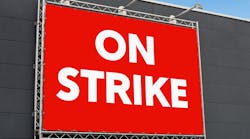‘We Are Not a Family’: Is It Any Wonder Workers Are Unhappy?
I started working in industry in the mid-1970s. In those days, college graduates were typically looking for an employer to work for over the length of their entire career. They thought this was possible, and so did I, based on what they had heard about how much most corporations valued their employees. And after working a couple of years, many of my peers still felt this was possible.
But a lot has changed over the years and, upon graduating, many college graduates no longer look for a career-long employer. And corporations are finding it more and more difficult to hire production workers. Why? Because corporate culture has changed over the last forty or so years to the point that employees are no longer considered primary company stakeholders. Let me explain.
When I started my career, employers tended to regard and address stakeholder interests according to a three-legged-stool approach—with customers, company employees and investors each represented by one leg. From my perspective, a culture change started in the 1980s, when OEMs decided to focus on what they referred to as “core competencies,” which led to outsourcing what were considered non-core processes such as stamping, machining, etc. This may have been good for supplier employees and employment, but it led to large numbers of Original Equipment Manufacturer (OEM) employees (both salaried and wage) losing their jobs.
In effect, this was the start of an era where length of the employee leg of the three-legged-stool started to be shortened, one cut at a time.
Corporate cultural changes accelerated in the early 1990s, when there was an almost lemming-like push among corporations to re-source from domestic suppliers to manufacturers in low-wage countries. You may ask, “What did this have to do with corporate employees?” My answer that it had many negative impacts—both direct and indirect—that opened the floodgates to a further shortening of the three-legged-stool’s employee leg.
OEMs considered fewer and fewer of their internal manufacturing processes as “core” and outsourced them to overseas low-wage suppliers. In fact, many OEMs today primarily focus on assembly as their single “core” competency. The result of this, of course, was corporations needing fewer and fewer employees to produce their products. Career-long employment? Hmmm.
Probably the most insidious impact of OEMs sourcing to low-wage countries was the promotion of a fantasy: that low-priced purchased material was a way to significantly improve company financials. This led to a new focus on how OEMS could limit internal employee wages and benefits.
It is not unusual, by the way, for employee compensation to make up less than 10% of overall cost of goods sold. So, while lowering the number of jobs and employee standards of living, smaller workforces and lagging pay had only incremental impact on improving corporate financials.
Below I detail a couple of other OEM actions that have continued further shortening of employee stool leg length:
- Multi-tier employee wages and benefits. Starting in the 1990s, many corporations instituted lower wages and benefits for new hires. Many times, this created dissention between the “old-timers” and the “new-comers.” In many ways, it represented an attempt by OEMs to “divide and conquer” employees and their interests.
- Company-financed retirement plans were virtually eliminated. 401Ks are good, but usually don’t make up for the loss of company retirement benefits. This resulted in the standard of living for many of their former workers being greatly reduced, often requiring them to take on part-time jobs in retirement.
- Companies cut or eliminated health care benefits. Similar to the above pension example, this greatly reduced their former employees’ standard of living in retirement.
There are other visible signs of the change in corporate culture. Following is a quote from the 14 August 2007 edition of The Wall Street Journal from one corporate executive (Robert Lane, then CEO of John Deere) about what he felt about traditional company resources:
"The fact is, we are not a family. What we are is a high-performance team.... If someone is not pulling their weight, you're not on the high-performance team anymore."
- Such an attitude pitted employee against employee, creating an environment where individuals tended to operate independently in order to gain visibility for their work. In effect, it turned a “one-for-all-and-all-for-one” into “It’s all about me.” It’s ironic that at this same time large OEMs were trying to ratchet up teamwork!
- Employees were treated more as plug-and-play resources, reducing the perceived value of employee experience and expertise. This led to OEMs pushing “old time” employees with much-needed experience out of their jobs and replacing them with new college grads with a lot of book-learning but very little understanding of what is needed to get the job done.
- It also led to outsourcing of salaried functions. Hundreds of companies outsourced their computer program development and coding functions to India and elsewhere, eliminating entire internal departments—and their employees—in one fell swoop. And of course, the incumbent employees were expected to train and otherwise update their replacements on currently existing programs and systems. Whoa!
This approach treats employees as replaceable and interchangeable rather than valuing tribal know-how and experience. Out in my neighborhood of the country (Washington state), Boeing has been a chief practitioner of this strategy, which may explain many of the problems they’ve experienced over that last several years.
The explanation for this shift away from employee valuation is along the lines of “we need to do this to remain competitive.” There is some truth in that, but many companies who apply these practices face minimal competition, at least in their biggest markets.
For instance, there are two well-known companies where employee unions have recently gone on strike, Deere & Co. and Kellogg Co. Over the years, both have taken actions such as instituting a multi-tiered employee pay and benefits plan (as described above) and reducing or eliminating employee health insurance coverage and/or company retirement benefits.
But in both cases the “competitiveness” explanation used to justify these changes doesn’t hold water. Why? North America is Deere’s biggest market. They face minimal domestic competition, enjoying high-double-digit market penetration in most of their product lines. And in fact, regularly are able to report record annual profit results.
And Deere is not likely to face more competition in the future, since the investment to enter farm and construction equipment manufacturing is so high that no new companies that can compete with Deere are likely to enter it, at least in the foreseeable future.
There’s a similar situation for Kellogg’s, at least in North America. If you like Rice Krispie bars as much as I do, you’ll appreciate those made with generic or off-brands just don’t measure up in quality and taste. And this holds for many of their products. They have a product reputation that ensures their leadership in their industry.
Again, all you must do to understand where the extra profit goes from shorting the employee leg of the three-legged stakeholder stool is look at the performance of the overall stock market over the last three decades. It has gone to investors.
A basic law of economics is that “when the returns on investment grow faster than employee compensation, the value of actual work goes down.” And this has been the case in the United States. In their drive increase to focus on their investors, corporations have been driving this result to the detriment of employees. It’s a sad reality, and one that will only change if corporations reevaluate their corporate employee management strategies.
And if they don’t, I don’t want to hear any corporations complain about lack of employee loyalty.
Paul Ericksen’s book is Better Business: Breaking Down the Walls of the Purchasing Silo. Ericksen has 40 years of experience in industry, primarily in supply management at two large original equipment manufacturers.




